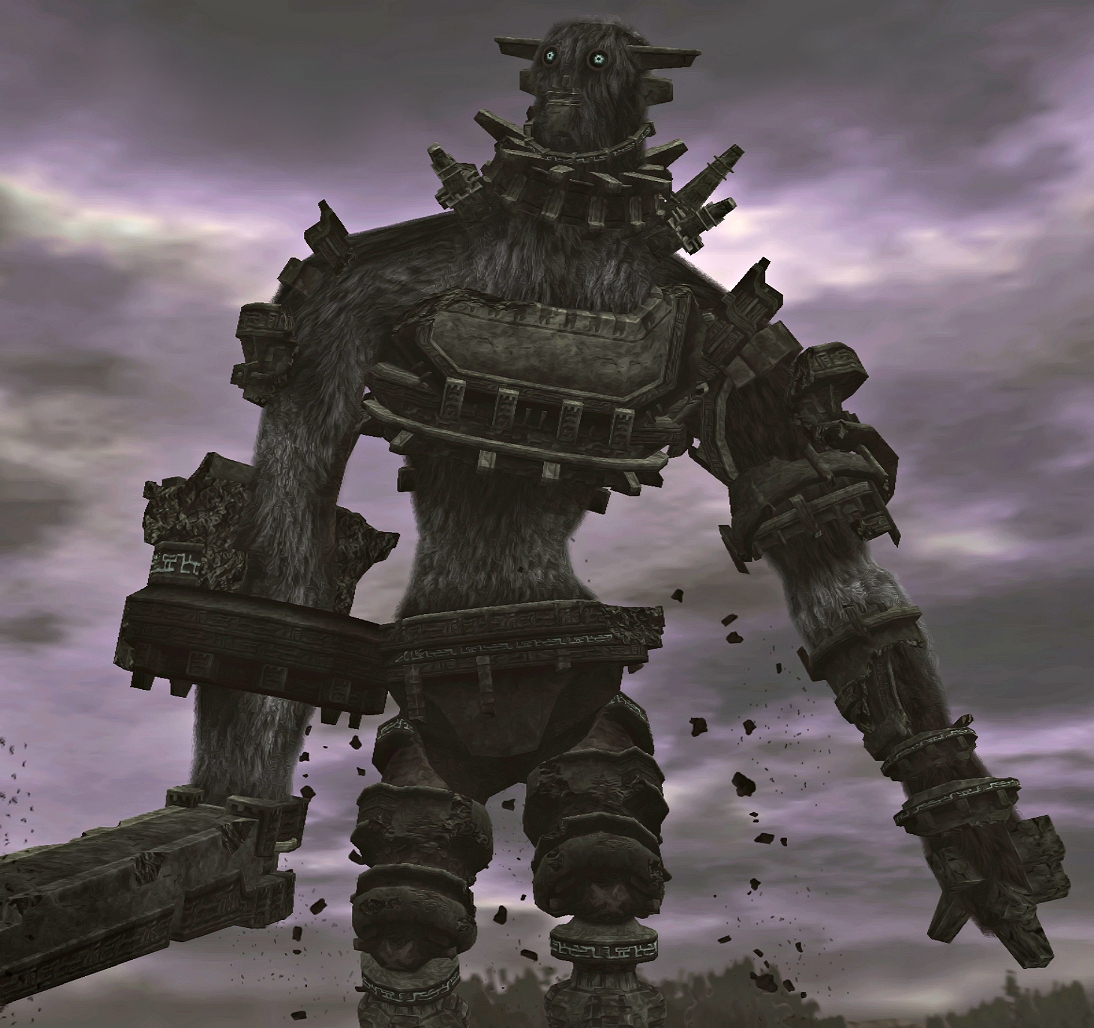

The real fun of Shadow of the Colossus, though, are the boss battles themselves. Warriors that just want to stab things can hold Square and do it until their heart's content. The most important button to memorize, however, was the R1 shoulder key - which is used to climb up cliffs, giant kneecaps, or whatever else you may need to ascend in a hurry. Users can call and kick your horse with the X button, tap Triangle to jump, and hold Circle to lift their swords in the air for directional reflections. The configuration itself, on the other hand, was pretty easy to remember. It was actually pretty difficult at first to jump and hold onto things as quickly and easily as I was used to in games with similar abilities but after about 5 minutes at the helm, it came a lot more naturally. Surprisingly, there was a bit of a learning curve with Shadow of the Colossus as the responsiveness of the character and the camera didn't seem to be implemented yet. The Sony reps on hand told me that this kind of adventuring was the game at its most basic, though, and that more multifaceted areas appear later on in the quest. And in a way, it also served as a tutorial on what abilities you'll need to battle the colossus in the first place. Climbing up cliffs to the right spot, leaping over crevices, and figuring out which path is the right one, serves as the precursor to the battle yet to come. In the demo I sampled, these puzzles were limited to your basic Prince of Persia jumping stages. Sometimes, you'll reach a point that only your hero can travel to too, which forces you to leave Agro and partake in the puzzle and adventure aspects of the game. as the more constricted it is, the closer to the proper direction you're heading. Another factor that users will have to keep in mind is how narrow their sunbeam is. More specifically, once you've gotten your quest guidelines the only way to find each shrine is to hold your sword up in the air to reflect the sun off of it - which will then point you in the direction of the nearest giant. Unlike most checkpoint-oriented games that simply send you down an obvious linear path, Shadow of the Colossus gives off a more open-ended structure for each mission.

Once found, these shrines can then be used to summon a colossus for an epic battle to the death.īelieve it or not, this is one of the smaller bosses. Players will have to trek through forests, rivers, hills, mountains, plateaus, and charred wastelands in order to find the illusive prayer shrines. Spread out over three-dozen different environments that are hundreds of square feet across each (600圆00), the stages are actually enormous landscape puzzles. The real trick to beating the game is actually finding the giants to vanquish in the first place. And while this kind of basic approach sounds pretty straightforward, Sony promises that ultimate victory is a lot easier said than done. You see, there are absolutely no other enemies in the game other than the 16 Colossi that you're charged with hunting down - and the only weapons you'll have at your disposal to defeat them is your horse (named Agro), your sword, and your bow and arrow. Currently undergoing the localization process by the same group that's also handling Genji, Shadow of the Colossus is such an interesting product because of its complex simplicity. Shown for the first time since 2004's Tokyo Game Show, Shadow of the Colossus was demoed and announced for America simultaneously last Monday at Sony Santa Monica's Pre-E3 Judges Day.
/cdn.vox-cdn.com/uploads/chorus_image/image/58654757/Shadow_of_the_Colossus_guide.0.jpg)
And that's what Shadow of the Colossus is really all about - locating and destroying each mythical monster before moving on to the next one. That challenge won't be easy, though, as the only way the protagonist can revive his girlfriend is by finding and defeating the 16 legendary giants imbued with enough spirit power to do it. Our hero is so in love with this dead woman, in fact, that he's decided to bring her back to life by accepting the ancient challenge of the Colossi. At its heart the game is a good old-fashioned love story, putting players in the role of an unidentified hero who possesses an eternal devotion to his fallen soul mate. Developed by the same team responsible for the aforementioned ICO, Shadow of the Colossus boasts one of the most intriguing concepts I've seen in quite some time (while still maintaining a rather classic feel).


 0 kommentar(er)
0 kommentar(er)
